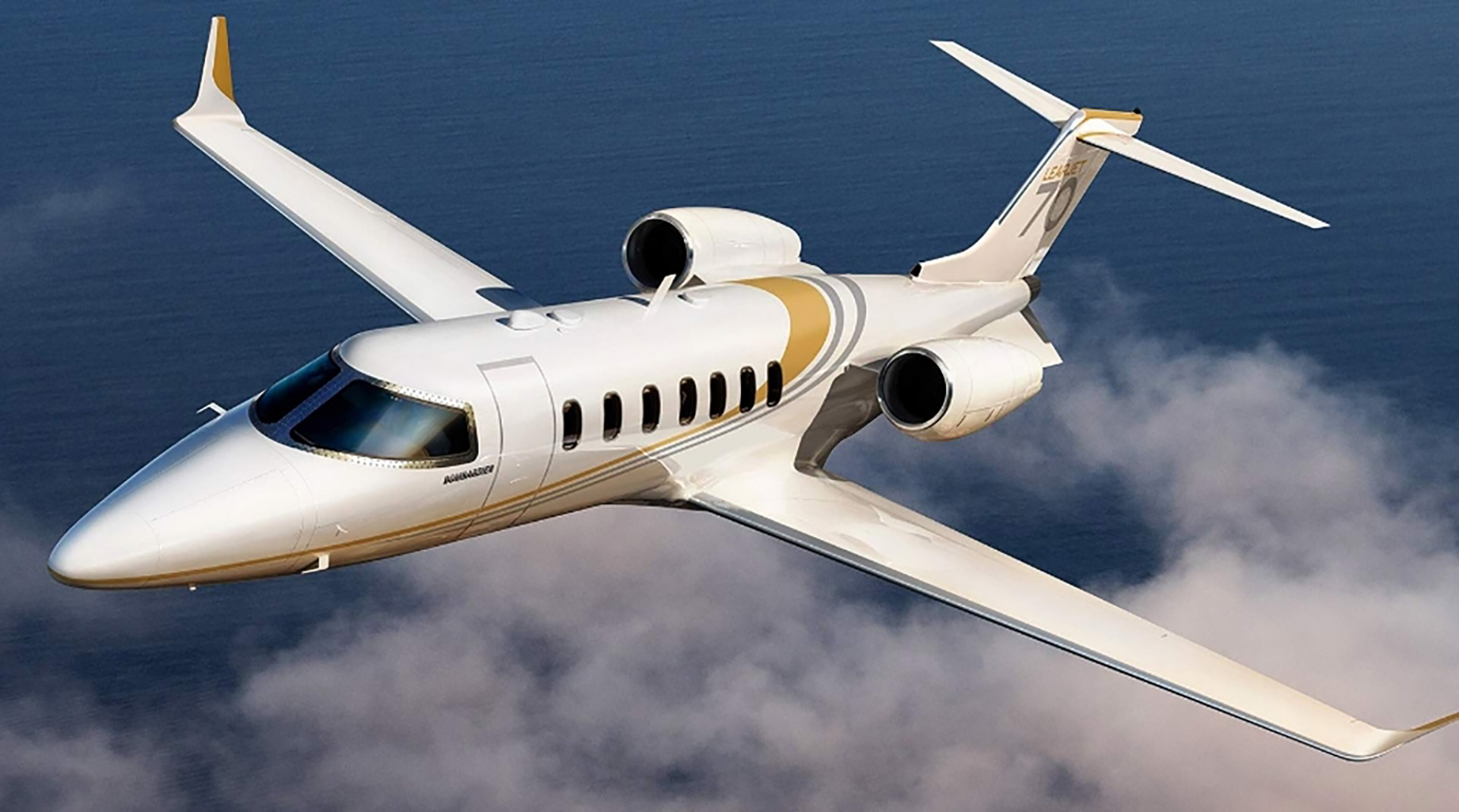The name Learjet will always be synonymous with luxury travel. For many, Learjet became the genericized trademark for all private jets due to its pioneering design in the early days of private aircraft.
But last month, parent company Bombardier announced they would cease production of the iconic plane later this year. This brings an end to 60 years of producing for the iconic jet, which has transported some of the biggest names of the 20th century.
“Challenging market dynamics”
This has been a challenging year for Bombardier. Like many, the Canadian manufacturer has faced problems brought about by the on-going COVID-19 pandemic and its subsequent effect on the airline industry.
In February, the company’s financial results for 2020 revealed a disruption to deliveries and services, especially for their flagship Global 7500. Unfortunately, the cost of this offset is the iconic Learjet range, which will end production in the fourth quarter of 2021.
Bombardier President, Éric Martel, revealed “the difficult decision to end Learjet production”, citing the reason for its demise as “increasingly challenging market dynamics”.
The company stated that the end of Learjet production would allow them to focus on the Global and Challenger aircraft series. Both these aircraft families offer a higher profit margin.
The Learjet has also faced stiff competition from other similar-sized aircraft such as General Dynamics’ Gulfstream, the Cessna Citation and the Embraer Phenom 100. Despite its iconic status, the Learjet has consistently been priced out of the market by these competitors.
The Canadian manufacturer has insisted that they will continue maintenance on existing Learjet models. They also announced the Learjet RACER remanufacturing program, which will upgrade Learjet 40 and Learjet 45 models. This will enhance these model’s avionics, connectivity, engine capacity and exterior/interior components.
Bombardier’s service centre in Wichita, Kansas, will handle these upgrades, preserving some of its workers’ employment. The Wichita facility, which has manufactured Learjet aircraft since 1962, will also remain as Bombardier’s primary flight-test centre. The company still expect it will serve a vital purpose in future operations.
Despite this, Éric Martel announced that Bombardier would be reducing their workforce by 1,600 positions, stating,
“We regret seeing talented and dedicated employees leave the company for any reason. But these reductions are absolutely necessary for us to rebuild our company while we continue to navigate through the pandemic.”
An Icon in Private Aviation
The Learjet’s history as the aerial shuttle of the stars stems back to its launch in 1963. The company’s first model, the Learjet 23, made its first flight on October 7th, 1963. At the time, it was one of the first private luxury aircraft, and for many, Learjet became their go-to association with business aviation.
The success of the Learjet was due to the innovative mindset of its inventor, Bill Lear. The American inventor had previously invented one of the world’s first car radios, the Motorola and would later develop the 8 track. Lear founded Learjet in Wichita during the early 1960s seeking to create a passenger version of the FFA P-16 fighter jet. The aircraft offered incredible speed and the capacity for six passengers – however, this was at the detriment of comfort and range.
The Learjet became notorious for its uncomfortable cabin (without toilet facilities) but attained success for its ability to cut journey times significantly. This helped secure its status as the jet of the high-flying elite during the 20th century. Despite initial hiccups in 1964, which involved the Learjet 23 prototype crashing upon take-off, the aircraft attained certification, and the first production started the same year.
Many early adopters of the Learjet were synonymous with 1960’s celerity stardom, which helped propel the Learjet’s early reputation. Frank Sinatra championed the aircraft and became forever associated with its iconic after purchasing a Learjet 23 in 1965. The ‘Come Fly with Me’ singer was renowned for lending the jet to other Hollywood stars such as Marlon Brando, Elvis Presley and Michael Caine.
Gates Rubber Company would later purchase Learjet and later sold the aircraft manufacturer to Bombardier in 1990. Over this time, Learjet’s evolved into significantly different aircraft to Bill Lear’s first model. The most considerable evolution of the Learjet brand since its conception was the transition from a focus on speed into an emphasis on comfort. This is evident in the Learjet 70/75, with the 45 seating seven passengers and a cabin size of 15 cubic feet.
Bombardier, in their press announcement, appeared disappointed to bring an end production on Learjet’s legacy, with Éric Martel stating,
“With more than 3,000 aircraft delivered since its entry-into-service in 1963, the iconic Learjet aircraft has had a remarkable and lasting impact on business aviation. Passengers all over the world love to fly this exceptional aircraft and count on its unmatched performance and reliability”.
Still Flying
Many Learjet models will remain flying, including the last of the “little Lears” – the Learjet 70/75, an updated version of the Learjet 45. Bombardier previously attempted to launch the Learjet 85 but cancelled the project indefinitely in 2015. Problems occurred in the production of the 85, as Bombardier tried and failed to adapt to a composite structure. Bombardier scrapped the project, citing a lack of market demand for the midsize jet as the primary reason.
The Learjet’s name and vision will forever be attached to private aviation, and enthusiasts will affectionately remember the jets for their unmistakeable design. But, in a practical sense, Bill Lear’s vision of a faster, sleeker future for flight will live on in the design of generations of aircraft to come.
Words by Jonathan Ritchie


0 Comments